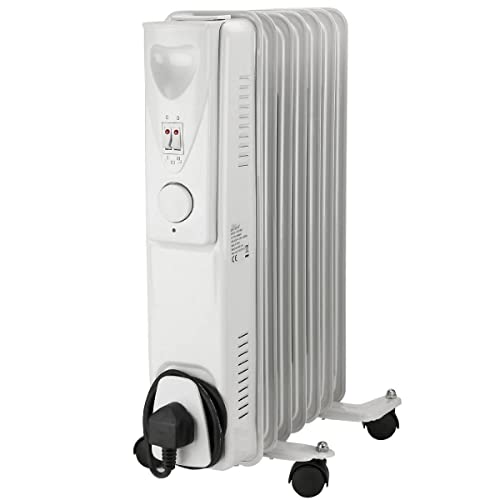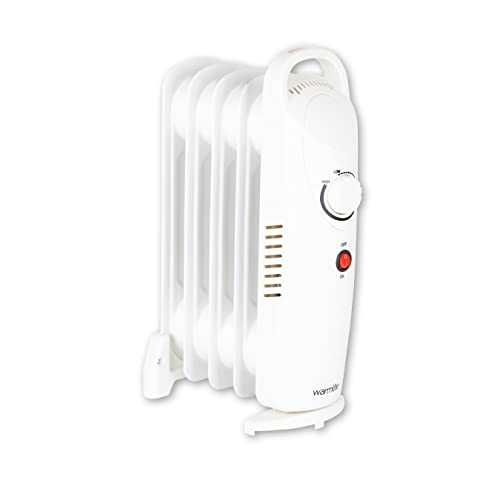Oil Radiator Isn't As Tough As You Think
페이지 정보

본문
 Why Choose an Oil Radiator?
Why Choose an Oil Radiator?Oil-filled radiators are a great option for keeping your home warm. They are economical and provide efficient heating.
But how do you choose the most efficient oil heater? The best model to choose will depend on the space along with features, wattage, and the ease of use.
 Choosing the right oil radiator
Choosing the right oil radiatorThe Ideal Home team has put the top-rated oil radiators to the test and compared them in terms of cost to run, ease of use, design, and heating performance. We've chosen the overall winner, and also compared models for small spaces, large rooms, and if you're shopping for a limited budget.
An oil filled radiator uses electrical elements to heat the thermodynamic oil which is then heated by the metal wall of the radiator. This causes a convection effect whereby air passes over the surface of the radiator and gets heated, then rises to heat the rest of the room. This type of radiator might take a bit longer time to heat up than other types, but once it has it, it will retain the heat for long periods, which makes it more energy efficient than electric oil radiators wall heaters.
You can also control your radiator using a timer or thermostat to set the temperature for the entire day. This is especially helpful when you're out of the home for long periods of time as it can be programmed to heat your room to a comfortable and energy efficient temperature. It can also stop your heating when it senses that the space is not being used to avoid wasting electricity while still maintaining a comfortable temperature.
In addition to allowing you to set the temperature you want Some oil radiators can be controlled via WiFi which means they can be controlled via an app on your smartphone or tablet. This gives you the flexibility to adjust your heating according to your schedule, or to adjust it as your routine changes.
Therefore the most effective oil radiators for your needs will feature a user-friendly interface and easy-to-use controls that are oil-filled radiators safe simple to comprehend. They are perfect for busy families that require a heating system that can be relied on to work without needing professional installation. The majority of our radiators come with an arm and wheels which makes them portable. They can be moved around from room to room. This makes them great for offices, spare bedrooms and bathrooms, as well as being used in conjunction with your main heating system in colder weather.
Thermostatic valves
Thermostatic vales are an essential part in any radiator system that runs on oil. They regulate the temperature in an area, but they also cut down on energy consumption and shield against scalding. They operate by using a thermosensitive wax capsule to detect the temperature of the air and then adjusting the amount of water is pumped into the radiator in order to maintain that desired temperature.
The thermostatic valve (TRV) is comprised of two components: the head and the base. The head is positioned on the body's top and, when the temperature in the room changes, the capsule inside the head will expand or contract, moving the pin on the body of the valve up or down to open or close the radiator. When the TRV closes, the head of valve is pressurized against the body. No water can pass through. When the TRV opens the pin will be moved upwards and the head will be raised which allows hot air to flow through radiators and warm the room.
TRVs come in a wide range of styles and finishes, so they can be utilized in a variety of spaces. Regularly cleaning is vital to ensure that your TRVs function effectively. Dust and other particles can block the vents in the valve head which could stop air from getting into the wax capsule or the liquid inside the body of the valve. This can cause the pins to become stuck, which can stop the valve from opening and closing. If this occurs, it's a good idea to give the head of the valve a spray with some trusty WD40 or a similar product and then work it up and down with your fingers to see if you are able to get it moving again.
Based on the heating system you have depending on your heating system, you may require straight or angle-shaped thermostatic valves. The valves with angles are designed to fit in tight spaces, such as corners or between furniture. They are commonly used for radiators in kitchens and bathrooms. Straight valves, on the other hand, are ideal for larger radiators and come with a built-in shut-off valve. This is useful if you want to shut off a radiator, but not turn your heating system off.
Manual valves
A valve is an electronic device that shuts and opens passageways to allow, regulate or prevent fluid flow. Valves come in a variety of different kinds each with its distinct mechanisms and functions. The type of valve you need will depend on your specific application.
Manual radiator valves are now popular because they are affordable and easy to use. They function in a similar manner to taps, with you turning the handle counter-clockwise to turn them on, and clockwise to turn them off. However manual valves aren't in full control of your temperature control and may overheat when left on too long.
Thermostatic radiator valves can control your heating system and can automatically regulate temperature in every room. This allows you to warm your home only when it's occupied and can save you money on energy bills.
In hydronic systems manual balance valves may be utilized to ensure that water flows evenly through a building's coils. This is essential to avoid the usual complaint of too cold or too hot areas. The issue arises when the flow of water within the system is affected by pressure changes. This could affect heat transfer and result in one coil becoming too hot while another one to be too cold.
Manual balancing vales are made to address this issue. They let you adjust the flow of water to each zone to adjust for changes in pressure. Cast iron is the most commonly used material however they come in many sizes and shapes. Other choices include stainless steel, chrome alloy brass and bronze. These valves are available in threaded or flanged ends, butt-weld or socket-weld connections. Some manual balancing valves feature an element that rotates to open and close the passageway. Certain valves come with switches or indicators that can be operated remotely to display their condition.
Power requirements
Oil radiators are designed to heat a space by convective and radiant heating methods. The thermal fluid inside the radiator will be able to reach all corners and nooks. In turn, they consume less energy than traditional forced-air heating systems.
They are also more energy efficient than central heating radiators because they don't require a system of pipes to transfer warm air throughout the house. The only thing that can influence their energy consumption is the wattage which determines how much warmth they can produce in an hour. This information is found on the packaging of the product and on our website.
Electricity is measured in kilowatt hours (kWh) and it is important to know this measurement when calculating the operating costs of an electric heater. To determine the power consumption of a radiator multiply the power rating in watts times the number of hours you're planning to use it in an hour. Divide the result by your energy provider's cents per kWh to determine how much it will cost to run.
When deciding on an electric heater, be aware of the insulation in your home or office. A good insulation will allow the radiator to retain its warmth for longer and consume less energy. If you reside in a cold or draughty location, you might prefer a higher wattage electric radiator to heat the space more quickly.
Oil-filled radiators use the same amount of energy as electric radiators to warm a room. This is because an electrical element heats the oil inside the radiator and then transfers the warmth to your home by air convection. It's important to keep in mind that the more draughty and large the room is, the more energy it will take to heat.
You can reduce the amount of energy your oil radiator uses by switching it on only when you are in need of it and avoiding leaving it turned on for too long between uses. You can also improve efficiency through features such as eco-modes and clocks that can be programmed.
- 이전글15 Things You Don't Know About Upvc Windows And Doors 24.06.10
- 다음글10 Quick Tips On Replacement Lock For Upvc Door 24.06.10
댓글목록
등록된 댓글이 없습니다.
